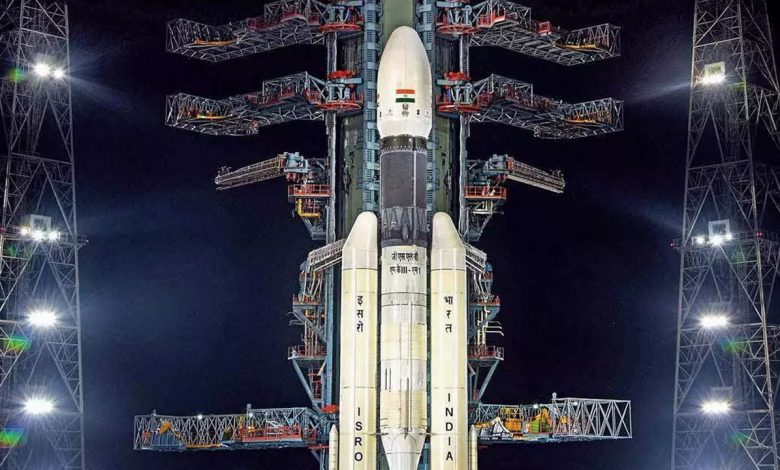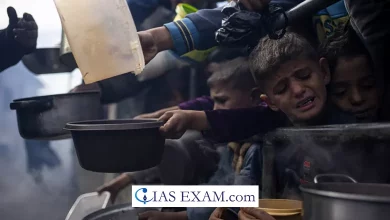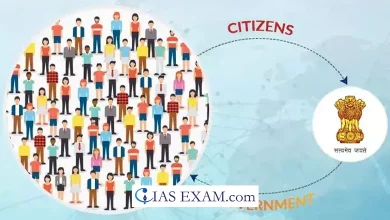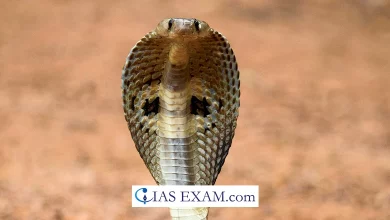
Context- The crucial EMI-EMC test has been successfully completed, as recently confirmed by the Indian Space Research Organization (ISRO).
Key Highlights
- Launch Vehicle Mark 3 (LMV3) will carry India’s third moon mission, Chandrayaan-3, into orbit later this year from the Satish Dhawan Space Centre in Sriharikota.
- At the U.R. Rao Satellite Centre in Bengaluru, the mission’s lander recently passed the crucial EMI-EMC (Electro-Magnetic Interference/Electro-Magnetic Compatibility) test.
- The test has confirmed that the satellite subsystems can function in space and are compatible with the expected levels of electromagnetic radiation.
- The Chandrayaan-3 mission is an interplanetary mission consisting of three main modules: the Rover, Lander, and Propulsion modules.
- The complexity of the mission necessitates the establishment of radio-frequency (RF) communication links among the modules.
- Launcher compatibility, antenna polarization of all RF systems, stand-alone auto compatibility tests for the orbital and powered descent mission phases, and Lander & Rover compatibility tests for the post-landing mission phase were all ensured during the Chandrayaan-3 lander EMI/EC test.
Significant Issues
-
- With A Complex Mission: The Propulsion module, Lander module, and Rover are all components of Chandrayaan-3, a complex interplanetary mission whose successful completion necessitates seamless communication between them.
- Technical issues: The previous Chandrayaan-2 mission had technical problems when it tried to land, so the Chandrayaan-3 mission may need to make more technical improvements, like making the landing and navigation systems better.
- Tough courses of events: The launch schedule for Chandrayaan-3 is crucial because it needs to be launched during the monthly lunar launch window. Any delays in the mission could force the launch to be rescheduled, which could result in additional costs and delays.
- The COVID-19 Epidemic: The global supply chain has been disrupted by the COVID-19 pandemic, which has caused significant delays in the manufacturing and testing of space equipment, which may result in additional mission delays.
About the Chandrayaan Mission
- India’s Chandrayaan lunar exploration program is a series of robotic missions with the goal of discovering the Moon’s resources.
- Elite group: India now joins the elite group of nations that have successfully landed on the moon, joining the United States, Russia, and China as the fourth nation.
Missions:
- Chandrayaan-1 mission
-
-
- Launched in October 2008, the Chandrayaan-1 mission carried out a number of scientific experiments and observations while in orbit around the Moon.
- It was India’s first mission to the Moon and the first to find water there.
- Involved an orbiter and an impactor, both built by Isro.
- The Polar Satellite Launch Vehicle carried it into orbit around the Moon more than 3,400 times.
- It carried 11 scientific instruments, five of which belonged to the Indian Space Research Organization (ISRO), the others to the European Space Agency (ESA), the National Aeronautics and Space Administration (NASA), and the Bulgarian Academy of Sciences.
- It was operational until August 29, 2009, which was 312 days ago.
-
- Chandrayaan-2 mission
-
-
- The Chandrayaan-2 mission was launched in July 2019 and consists of an ISRO-built orbiter, lander (Vikram), and rover (Pragyaan).
- India was the first nation to attempt a soft landing near the Moon’s south pole.
- The Geosynchronous Satellite Launch Vehicle Mk-III carried it into orbit when it was launched from Sriharikota, Andhra Pradesh’s Satish Dhawan Space Centre.
- It wanted to launch the Pragyaan rover and land the Vikram lander on the moon.
- It carried eight scientific payloads for studying the Moon’s exosphere, or outer atmosphere, and mapping the lunar surface.
- It appears that a problem with its braking rockets caused the lander Vikram to collide with the lunar surface.
-
- Chandrayaan-3 mission
-
- Launch of the Chandrayaan-3 mission is anticipated by the end of 2023.
- It aims to land a rover on the Moon’s surface and is estimated to cost around 615 crore Indian Rupees (about 82 million USD).
Importance for India
- Chandrayaan demonstrated India’s scientific and technological capabilities and established the nation as a major player in space exploration.
- India has gained valuable knowledge and experience in space exploration thanks to the mission, which it can use in other areas like satellite technology and space tourism.
- New opportunities for space exploration and resource utilization have emerged as a result of Chandrayaan-1’s discovery of water on the Moon. These opportunities include the potential for future lunar colonies and space mining.
- Additionally, the mission has encouraged younger generations to pursue careers in STEM fields, thereby contributing to the country’s overall development.
Way Ahead
- India’s Chandrayaan missions are significant accomplishments that have demonstrated the nation’s capabilities in space exploration and opened up new avenues for future research and development.





.png)



